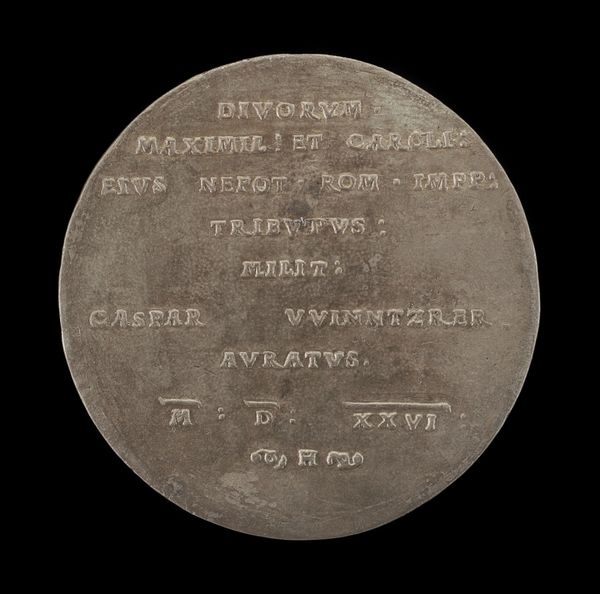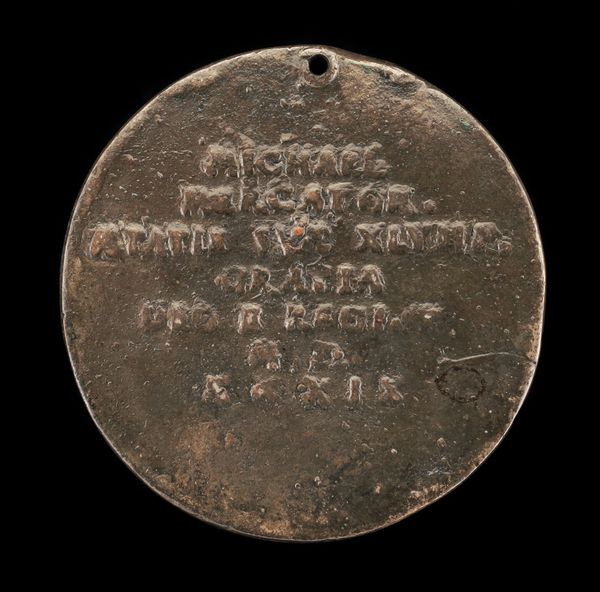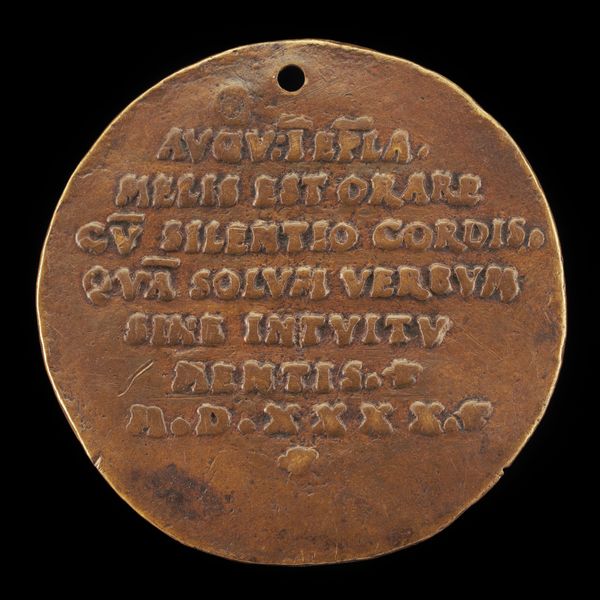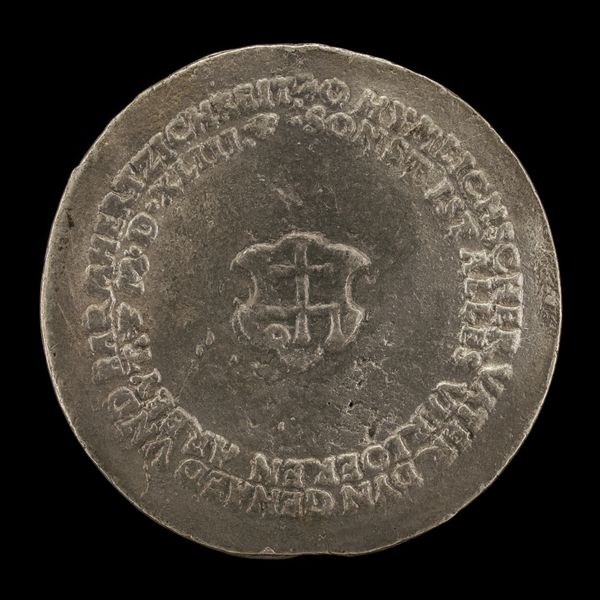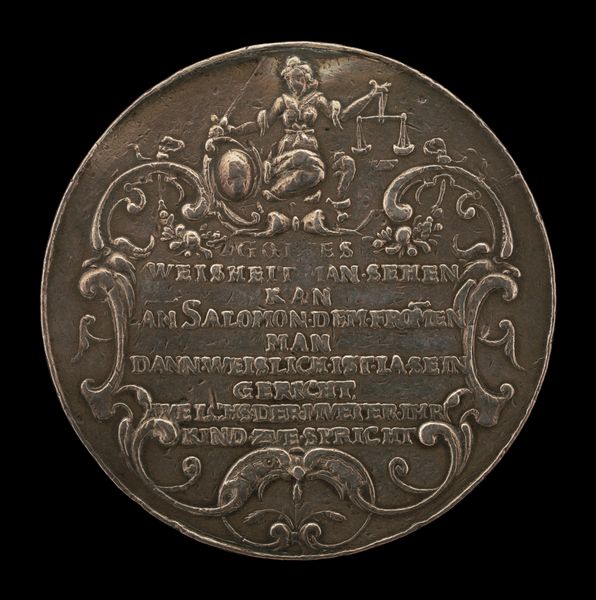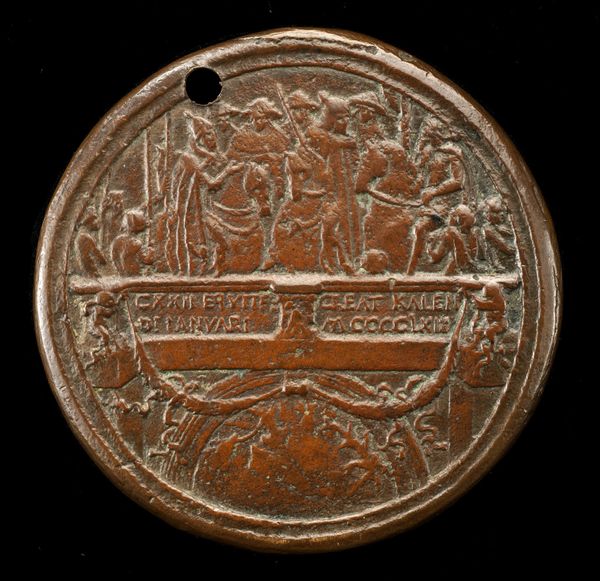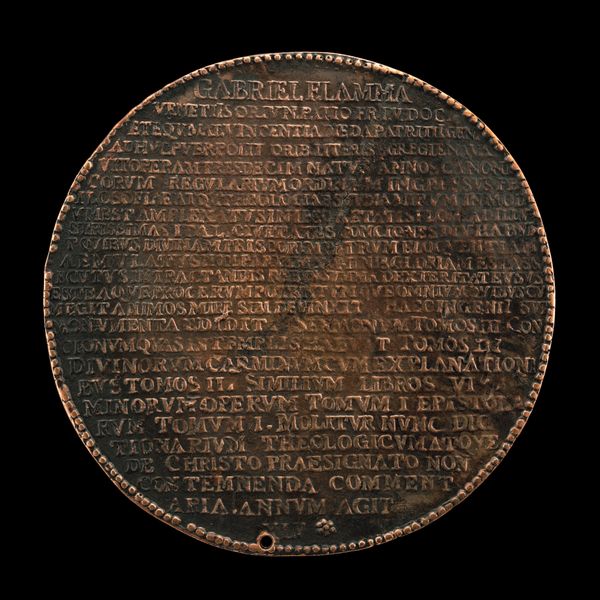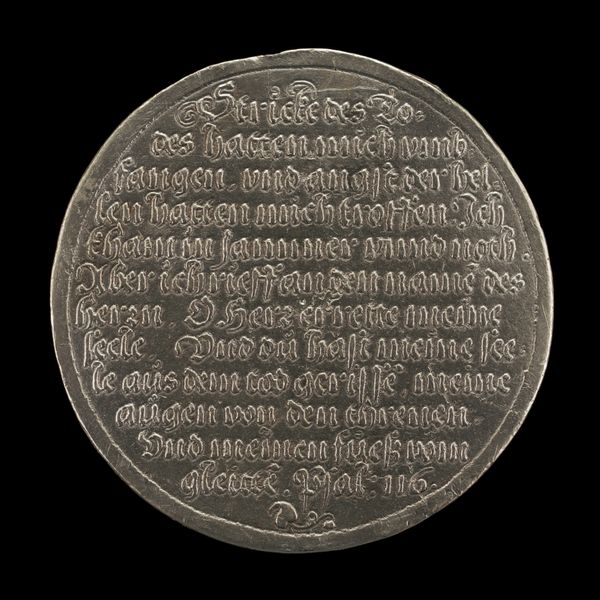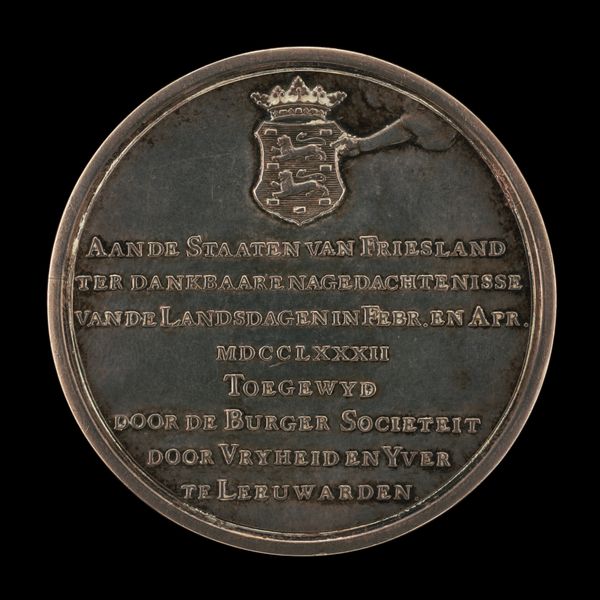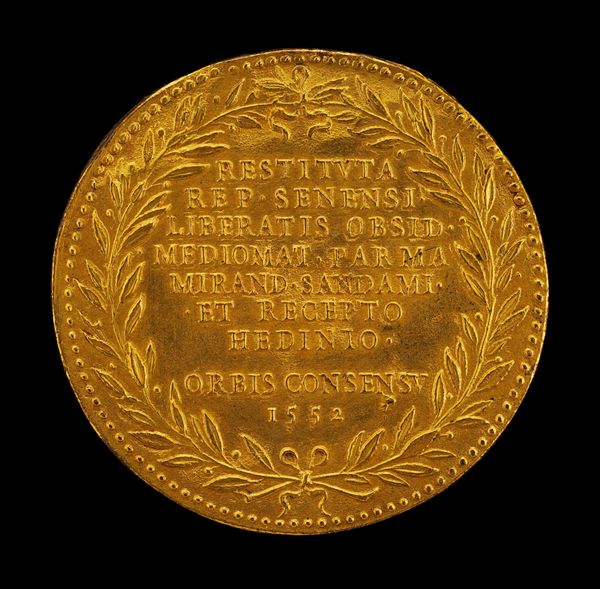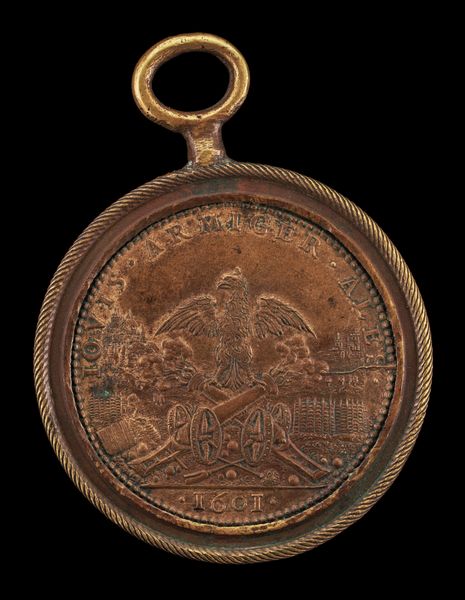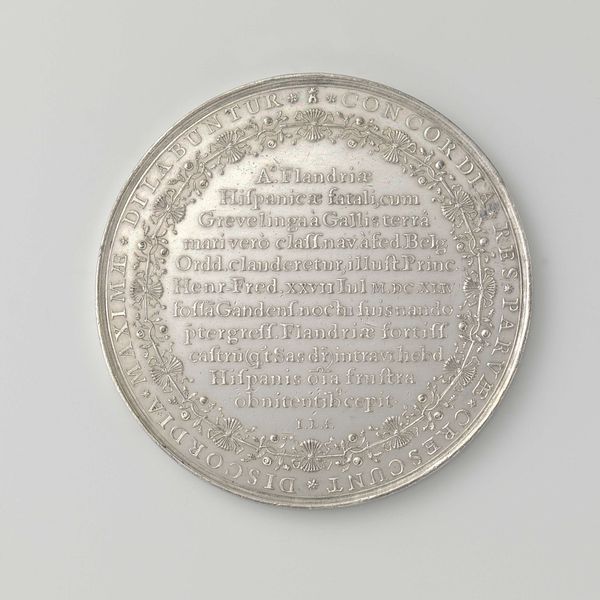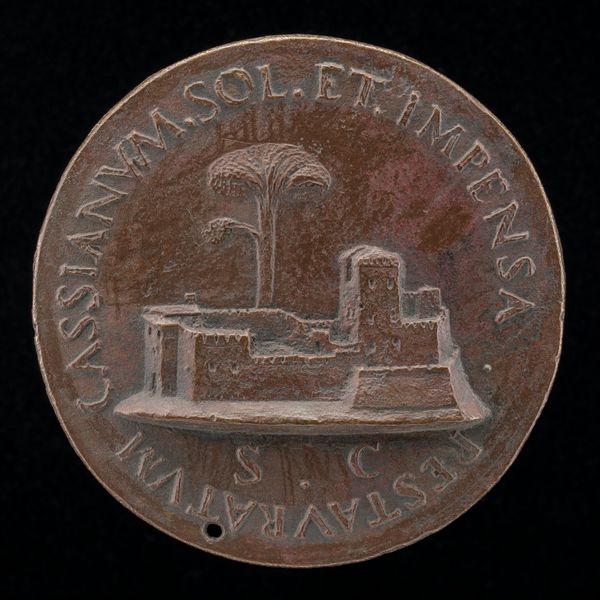![Inscription [reverse] by Michel Molart](/_next/image?url=https%3A%2F%2Fd2w8kbdekdi1gv.cloudfront.net%2FeyJidWNrZXQiOiAiYXJ0ZXJhLWltYWdlcy1idWNrZXQiLCAia2V5IjogImFydHdvcmtzLzZhMTgxNDdkLTNiM2MtNGE4Ny1iMDkwLWJiYTEyZDczNmZlYS82YTE4MTQ3ZC0zYjNjLTRhODctYjA5MC1iYmExMmQ3MzZmZWFfZnVsbC5qcGciLCAiZWRpdHMiOiB7InJlc2l6ZSI6IHsid2lkdGgiOiAxOTIwLCAiaGVpZ2h0IjogMTkyMCwgImZpdCI6ICJpbnNpZGUifX19&w=3840&q=75)
print, metal, sculpture, engraving
#
portrait
#
medal
#
baroque
# print
#
metal
#
stone
#
sculpture
#
sculpture
#
engraving
Dimensions: overall (diameter): 8.54 cm (3 3/8 in.) gross weight: 191.36 gr (0.422 lb.) axis: 12:00
Copyright: National Gallery of Art: CC0 1.0
Curator: Editor: Okay, so this is a metal engraving, "Inscription [reverse]", by Michel Molart from 1684. It has a rather stoic, aged presence to it. What stands out to you about this medal? Curator: It is powerful how a seemingly simple object like this speaks volumes about power and its legitimization. It presents a fascinating insight into 17th-century European power dynamics, right? It is clearly intended to glorify Louis XIV, celebrating military victories and asserting dominance, but I am always curious to examine how these symbols intersect with the lives of ordinary people who suffered under his reign. How does the medal's message of triumph contrast with, say, accounts of poverty or social unrest during that period? Editor: That's a great point, that wasn't something I considered at first. Thinking about it from the perspective of those who may have suffered, it reframes the work with a rather cynical view, I find that very compelling. Does the medium itself – the metal and engraving – contribute to that sense of power? Curator: Absolutely. Metal, historically associated with wealth and permanence, conveys durability and lasting impact. The engraved inscription ensures its message is replicated, widely disseminated. The Latin inscription adds an extra layer, speaking to an educated elite, further reinforcing social hierarchy. So we have to consider; whose story is actually being told here and whose is erased or silenced? Editor: So it's less about a historical record and more of a propagandist statement meant to cement power through carefully constructed visual and textual narratives. I learned so much about the intersection of art and social injustice here. Thanks! Curator: Exactly. Examining art within the matrix of its time makes the narratives and power structures it subtly reinforces clearer, a critical dialogue that needs to be part of art appreciation.
Comments
No comments
Be the first to comment and join the conversation on the ultimate creative platform.
